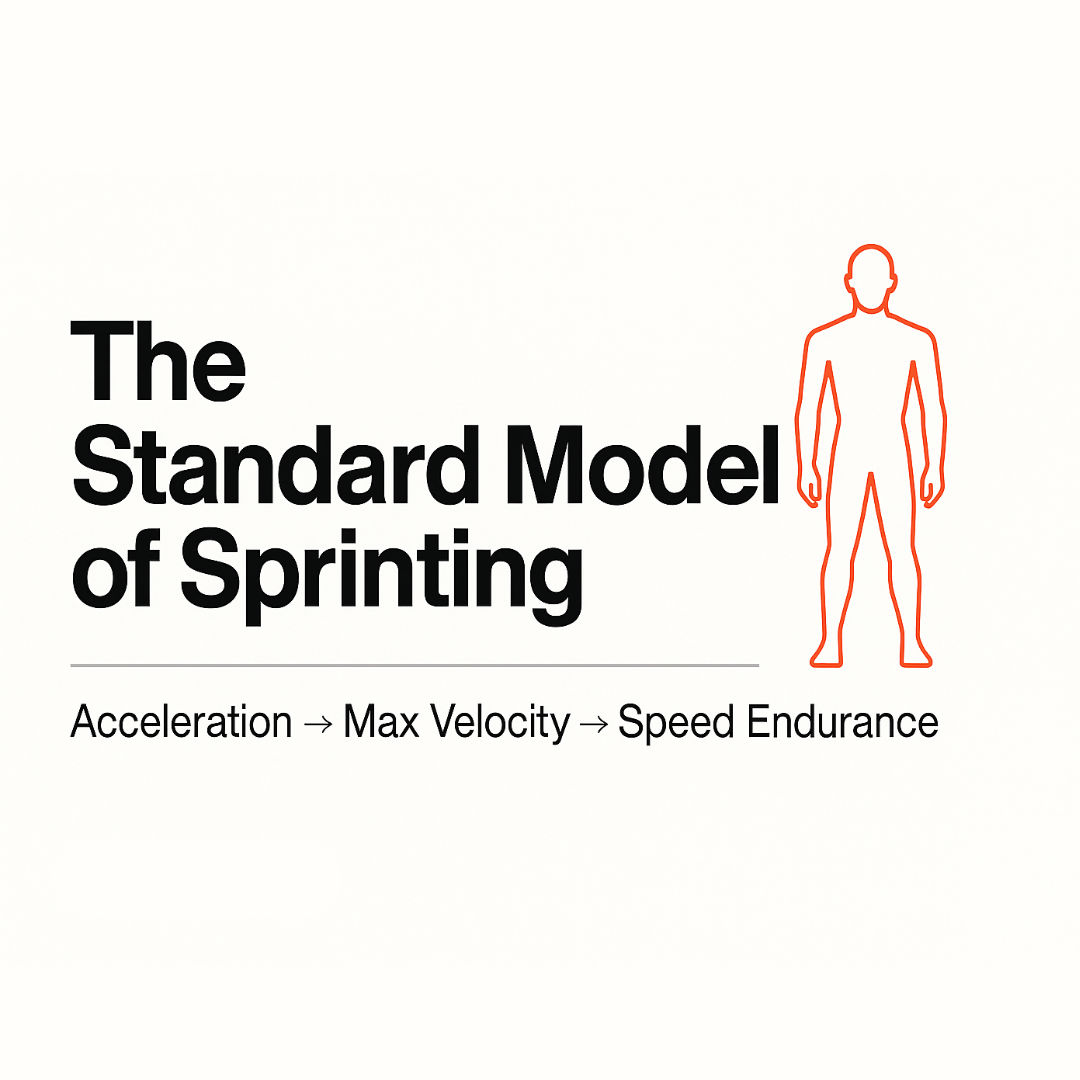
The Standard Model of Sprinting: Why Modern Biomechanics Has Changed the Game
Discover how modern biomechanics is reshaping sprint training, replacing outdated “base building” with max velocity and acceleration-first methods.

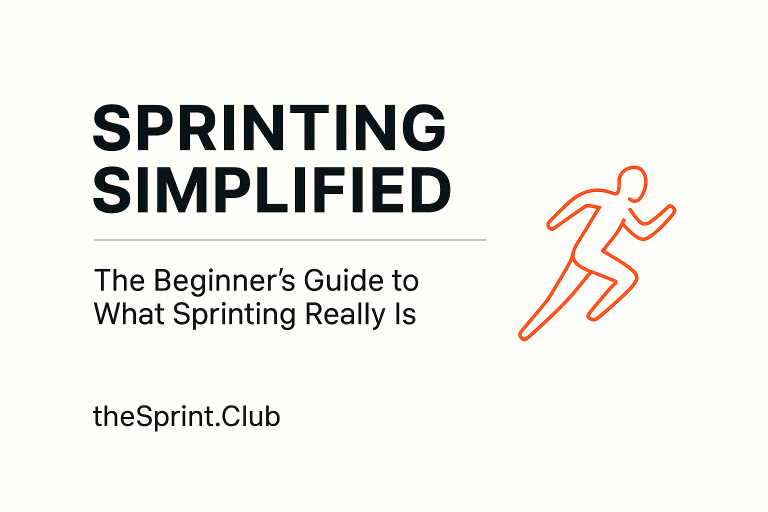

Most people think they’ve sprinted. But here’s the truth: jogging faster or “picking up the pace” isn’t the same thing. Sprinting is running at or near your maximum velocity, using explosive muscular force and precise mechanics to cover ground as quickly as possible.
In biomechanics terms, sprinting is about producing high ground reaction forces in very short contact times, while coordinating your arms, hips, and legs to maximize forward propulsion.
👉 Think of it this way:
Sprinting isn’t just for Olympic sprinters. It’s one of the most fundamental athletic skills for humans:
And because sprinting recruits nearly every muscle group, it’s been called the “king of athletic movements.”
Sprinting isn’t one uniform effort — it unfolds in phases:
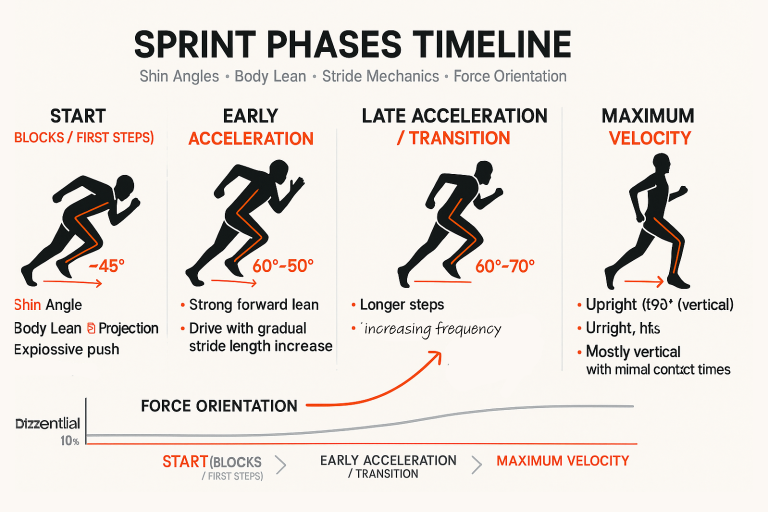
Every sprint step is a collision with the ground. You strike your foot down, and the ground pushes back — that’s the ground reaction force.
Elite sprinters don’t just strike with more force — they push better, orienting their force efficiently.

Speed = stride length × stride rate.
👉 Analogy: It’s like cycling — you can go faster by pedaling quicker, by using bigger gears, or by mastering both.
Think of your legs as pogo sticks.
Too little stiffness = “sinking” into the ground.
Too much stiffness = injury risk. Balance is key.
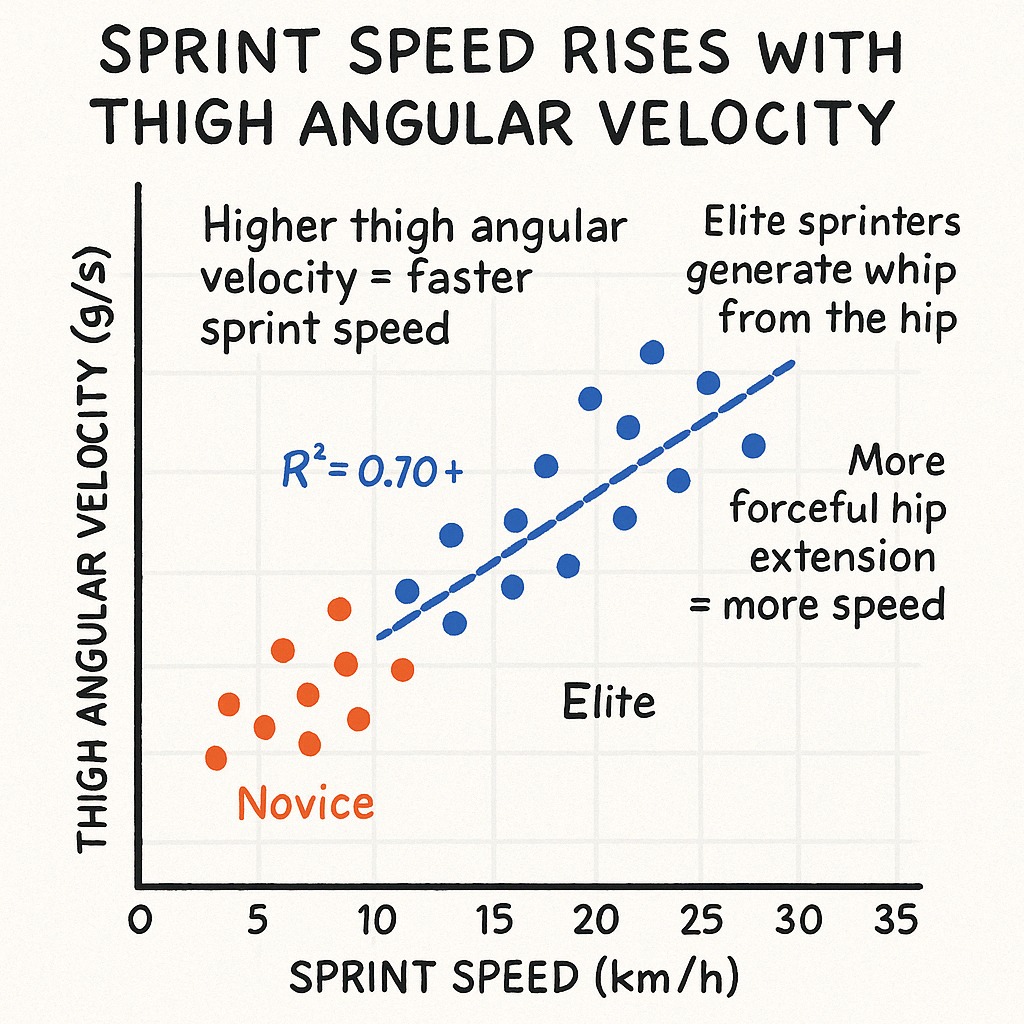
A breakthrough concept in sprinting: thigh angular velocity.
👉 Imagine cracking a whip: the faster the handle (hip) moves, the more power travels down the line (your leg).

Explosive strength lets you generate force quickly. Resistance training — especially targeted loads like wearable resistance — can improve sprint acceleration.
It’s not brute force alone. Elite sprinters time every limb swing, foot strike, and arm drive with near-perfect precision.
Science consistently shows it’s not just how much force you create, but where you direct it. Horizontal force dominates acceleration; vertical force sustains top speed.
Hamstrings, glutes, quads, and calves all contribute — but at different phases. For example, hamstrings are heavily loaded near top speed, explaining why they’re injury-prone.
Apply force in the right direction, whip the hip fast, and bounce off the ground
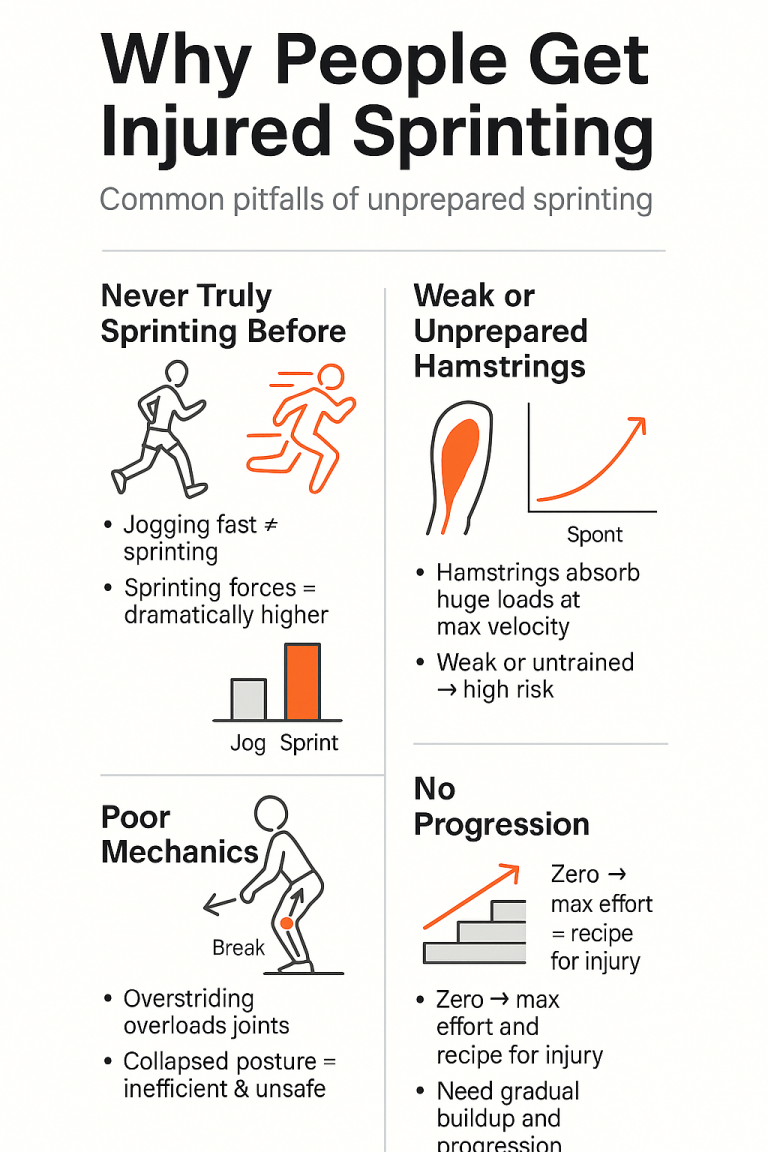
Many beginners “test their speed” without proper preparation.
Common pitfalls:
👉 Hamstring strains are the #1 sprinting injury because the hamstrings act as brakes and engines simultaneously.
👉 Hamstring strains are the #1 sprinting injury because the hamstrings act as brakes and engines simultaneously.

Sprinting is a high‑force, high‑speed skill. It rewards precision and progression more than “trying harder.” Start by learning the shapes and rhythms that let you apply big force in very short ground contacts, then build exposure gradually so tissues adapt and you stay healthy.
Bottom line: master the positions, make contacts powerful and stiff contacts on the ground, and progress volume and intensity slowly. Quality first. Quantity later. Speed follows.


Lean slightly forward when accelerating; upright at max speed (torso still has a slight forward lean with chest just over the proximal thigh on thigh block).
Think “tall, aligned, and elastic.” Posture organizes force so you can push in acceleration and bounce at max velocity.

Arm Action: Bigger Shapes on Early Acceleration… working to smaller more compact shapes on MaxV.
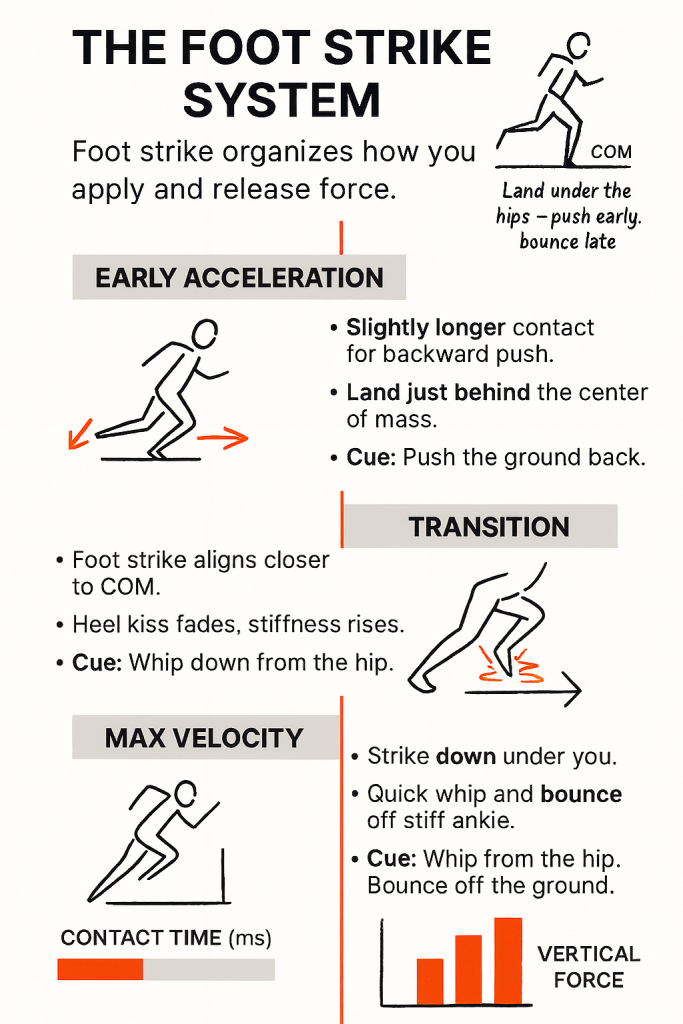
Land under hips, not ahead.
Think “strike down under you, get off fast.” Foot strike should place force under or just behind the center of mass with very short contact.
You want to “Whip from the Hip” to create lower limb velocity to that makes a violent collision with the ground and then “BOUNCE off the ground” at MaxV to minimize ground contact time (GCT)
*Put simply: place the foot under you with a stiff, pre-tensioned ankle, strike down not forward, and leave the ground fast.
❌ “It’s all genetics.”
Genetics matter, but training force orientation, stiffness, and mechanics can make anyone faster.
❌ “Lifting weights makes you slow.”
Strength training, when applied correctly, boosts acceleration and sprint power.
❌ “Only young athletes should sprint.”
With proper progression, sprinting is one of the best anti-aging exercises.
Sprinting uses nearly the entire body, but the main movers are the hamstrings, glutes, quadriceps, and calves. The hamstrings and glutes power hip extension, quads drive the knee, and calves handle explosive push-off. Arms and core play key roles in balance and coordination.
Yes, sprinting can be safe if introduced gradually. Beginners should focus on drills, technique, and progressive intensity before going all-out. Most injuries occur when people “max out” without preparation, especially in the hamstrings.
A beginner should sprint at about 70–80% of their maximum effort when starting out. Full-effort sprints should only be attempted after several weeks of building strength, coordination, and sprint drills.
Speed comes from a combination of force application, stride mechanics, and coordination. Elite sprinters apply force more effectively — directing it horizontally during acceleration and vertically at top speed. Leg stiffness, thigh angular velocity, and muscle power also play major roles.
Most people benefit from sprinting 1–2 times per week, with full recovery between sessions. Sprinting is very demanding, so quality matters more than quantity.

Discover how modern biomechanics is reshaping sprint training, replacing outdated “base building” with max velocity and acceleration-first methods.
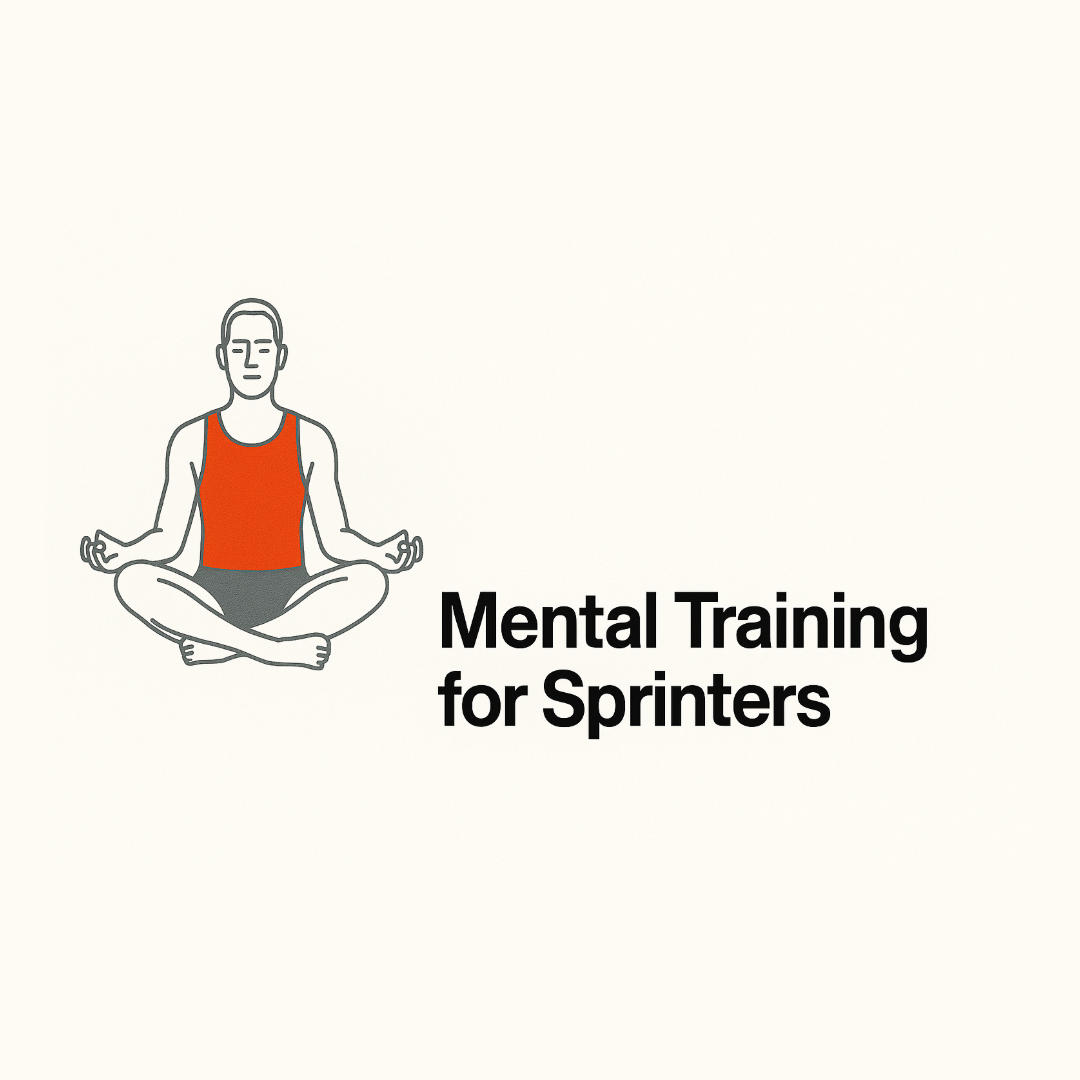
Unlock sprinting speed with proven mental training. Learn visualization, mindfulness, and sports psychology techniques to boost explosive performance.

Should sprinters focus on work capacity or speed quality? Discover the truth about GPP vs SPP and the real goal of sprint training.

